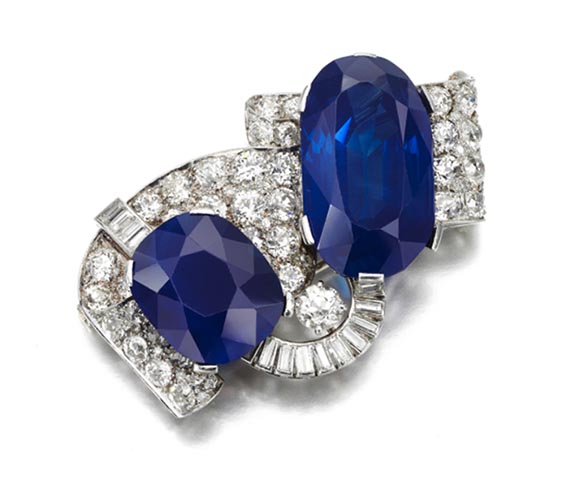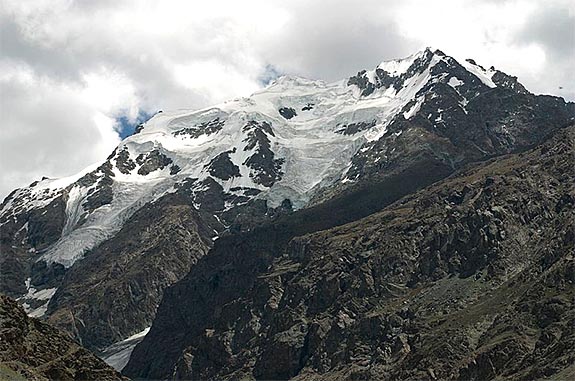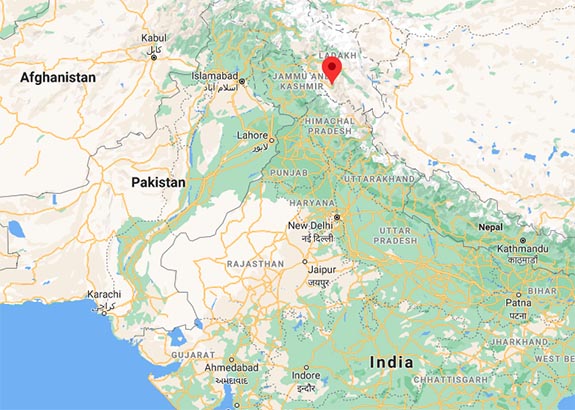April 5th, 2021
Exactly 140 years ago, a dangerous landslide led to the discovery of the most beautiful and coveted sapphires known to man. High above the nearly inaccessible Himalayan village of Soomjam, the serendipitous event exposed a sheer wall pocked with cornflower blue corundum crystals — gems that would soon be known as Kashmir sapphires.

At first, the locals traded the gem crystals — one for one — for salt. But soon the word got out, merchants recognized their true value and their popularity grew.
Despite the extremely limited three-month mining window due to rough terrain and inhospitable weather, the Kashmir sapphire supply at the original "Old Mine" was completely exhausted by 1887.
The six years of production at the "Old Mine" yielded some of the largest, most beautiful and valuable sapphires the world had ever seen or will ever see. Some of the rough gems were rumored to be as large as 3 x 5 inches. Indian traders referred to their richly saturated blue color as "peacock's neck."

After the initial find was depleted, prospectors attempted to continue their good fortunes at the "New Mine," just south of the original. But those attempts were scrapped because of harsh weather conditions and limited production.
Today, the legacy of the "Old Mine" lies in the valuable stones that were sourced in Kashmir between 1881 and 1887. Two of those stones are headlining Sotheby's Geneva auction on May 11. The 55.19-carat oval-cut Kashmir sapphire, seen above, is being billed as the largest of its kind ever to appear at auction.

The 55.19-carat sapphire is set in a stylized ribbon brooch alongside a cushion-shaped Kashmir sapphire weighing 25.97 carats. The jewelry, which is dated to the 1930s and designed by Cartier, and was once owned by Maureen Constance Guinness, the heiress to the Guinness beer fortune.
“Kashmir sapphires of over 30 carats are a very rare occurrence, so the appearance of a gem of 55.19 carats — the largest ever to come at auction — is an important event,” said Benoit Repellin, head of Sotheby’s Geneva Magnificent Jewels auction.
Sotheby's noted that the Kashmir stones exhibit the deep, velvety blue for which sapphires from these fabled mines are best known, owed to fine clouds of dispersed nanoparticles of iron and titanium, which scatter the light and give the stones a dreamy haziness, quite unlike sapphires from other locations."
Sotheby's is estimating that the brooch will fetch as much as $3 million at its Magnificent Jewels and Noble Jewels sale.
Credits: Jewelry image courtesy of Sotheby's. Zanskar range of the Himalayas by Kashmir photographer, CC BY-SA 4.0, via Wikimedia Commons. Map by Googlemaps.

At first, the locals traded the gem crystals — one for one — for salt. But soon the word got out, merchants recognized their true value and their popularity grew.
Despite the extremely limited three-month mining window due to rough terrain and inhospitable weather, the Kashmir sapphire supply at the original "Old Mine" was completely exhausted by 1887.
The six years of production at the "Old Mine" yielded some of the largest, most beautiful and valuable sapphires the world had ever seen or will ever see. Some of the rough gems were rumored to be as large as 3 x 5 inches. Indian traders referred to their richly saturated blue color as "peacock's neck."

After the initial find was depleted, prospectors attempted to continue their good fortunes at the "New Mine," just south of the original. But those attempts were scrapped because of harsh weather conditions and limited production.
Today, the legacy of the "Old Mine" lies in the valuable stones that were sourced in Kashmir between 1881 and 1887. Two of those stones are headlining Sotheby's Geneva auction on May 11. The 55.19-carat oval-cut Kashmir sapphire, seen above, is being billed as the largest of its kind ever to appear at auction.

The 55.19-carat sapphire is set in a stylized ribbon brooch alongside a cushion-shaped Kashmir sapphire weighing 25.97 carats. The jewelry, which is dated to the 1930s and designed by Cartier, and was once owned by Maureen Constance Guinness, the heiress to the Guinness beer fortune.
“Kashmir sapphires of over 30 carats are a very rare occurrence, so the appearance of a gem of 55.19 carats — the largest ever to come at auction — is an important event,” said Benoit Repellin, head of Sotheby’s Geneva Magnificent Jewels auction.
Sotheby's noted that the Kashmir stones exhibit the deep, velvety blue for which sapphires from these fabled mines are best known, owed to fine clouds of dispersed nanoparticles of iron and titanium, which scatter the light and give the stones a dreamy haziness, quite unlike sapphires from other locations."
Sotheby's is estimating that the brooch will fetch as much as $3 million at its Magnificent Jewels and Noble Jewels sale.
Credits: Jewelry image courtesy of Sotheby's. Zanskar range of the Himalayas by Kashmir photographer, CC BY-SA 4.0, via Wikimedia Commons. Map by Googlemaps.

